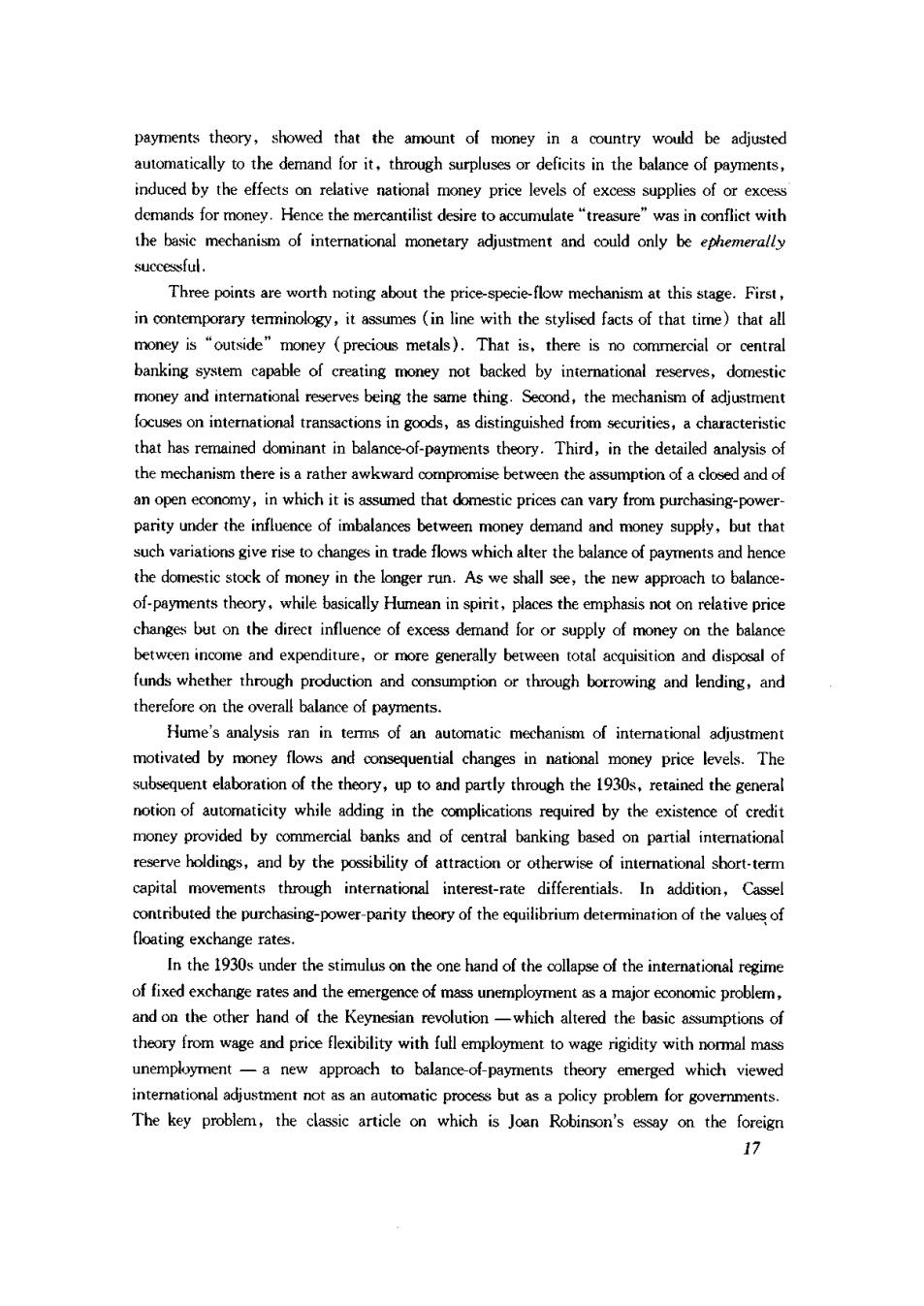正在加载图片...

payments theory,showed that the amount of money in a country would be adjusted automatically to the demand for it.through surpluses or deficits in the balance of payments, induced by the effects on relative national money price levels of excess supplies of or excess demands for money.Hence the mercantilist desire toaccumulate"treasure"was with the basic mechanism of international monetary adjustment and could only be ephemerally successful. Three points are worth oting about the mechanism at this stage.First in contemporary terminology,it assumes(in line with the stylised facts of that time)that all money is "outside"money (precious metals).That is,there is no commercial or central banking system capable of creating money not backed by inernational reserves,domestic money and international reserves being the same thing.Second,the mechanism of adjustment focuses on international transactions in goods,as distinguished from securities,a characteristic that has remined dominant in balacf-ayments theory.Third,in the detailed the mechanism there is a rather awkward compromise between the assumption of a closed and of an open economy,in which it is assumed that domestic prices can vary from purchasing-power- parity under the influence of imbalanes betwee money demand and money supply,but tha such variations give rise to changes in trade flows which alter the balance of payments and hence the domestic stock of money in the longer run.As we shall see,the new approach to balance of-payments thory while the pric changes but on the direct influence of excess demand for or supply of money on the balance between income and expenditure,or more generally between total acquisition and disposal of funds whether and onsumption through borrowing and lending,and therefore on the overall balance of payments. Hume's analysis ran in terms of an automatic mechanism of international adiustment motivated by money flows and onsequential changes in national money price levels.The subsequent elaboration of the theory,up to and partly through the 1930s.retained the general notion of automaticity while adding in the complications required by the existence of credit reserve holdings,and by the possibility of attraction or otherwise of international short-term capital movements through international interest-rate differentials.In addition.Cassel the purchsingwer-parity theory of loating exchange rates. In the 1930s under the stimulus on the one hand of the collapse of the international regime of fixed exchange rates and the emergenceof and on the other hand of the Keynesian revolution-which altered the basic assumptions of theory from wage and price flexibility with full employment to wage rigidity with nommal mass unempkoyment a new approach to balance of-payments theory emerged which viewe intemational adijustment not as an automatic process but as a policy problem for governments. The key problem,the classic article on which is Joan Robinson's essay on the foreign